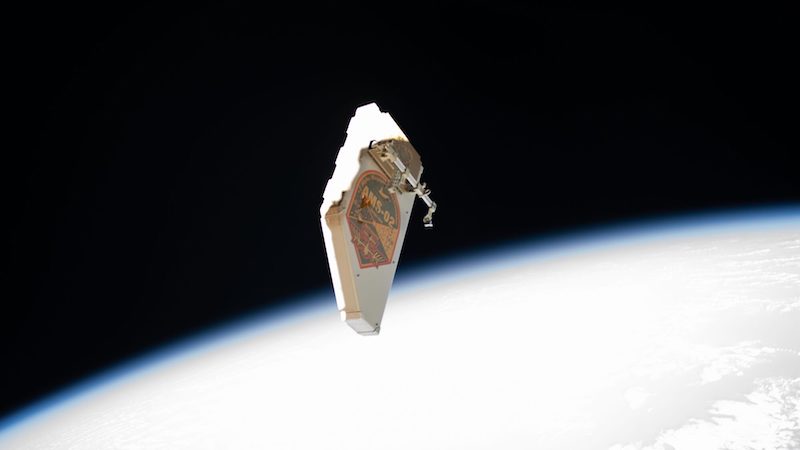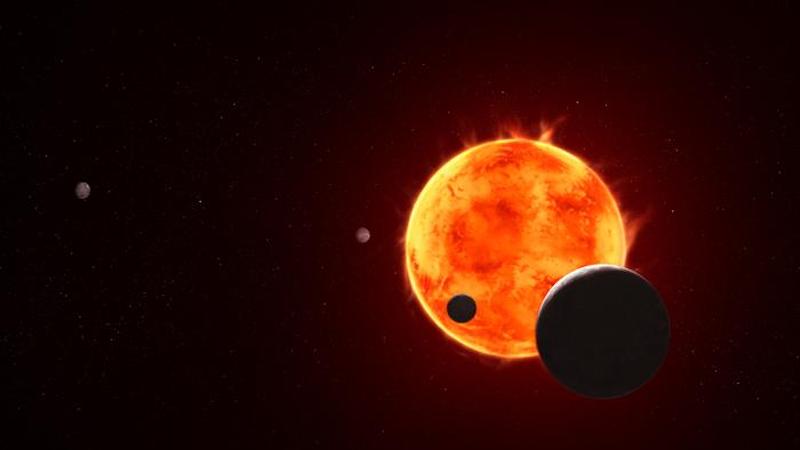The new study led by Prof Tomonori Totani of the University of Tokyo analysed Fermi telescope observations of the Milky Way's centre - the region...
Vous n'êtes pas connecté
- English
- Français
- عربي
- Español
- Deutsch
- Português
- русский язык
- Català
- Italiano
- Nederlands, Vlaams
- Norsk
- فارسی
- বাংলা
- اردو
- Azərbaycan dili
- Bahasa Indonesia
- Հայերեն
- Ελληνικά
- Bosanski jezik
- українська мова
- Íslenska
- Türkmen, Түркмен
- Türkçe
- Shqip
- Eesti keel
- magyar
- Қазақ тілі
- Kalaallisut ; kalaallit oqaasii
- Lietuvių kalba
- Latviešu valoda
- македонски јазик
- Монгол
- Bahasa Melayu ; بهاس ملايو
- ဗမာစာ
- Slovenščina
- тоҷикӣ ; toğikī ; تاجیکی
- ไทย
- O'zbek ; Ўзбек ; أۇزبېك
- Tiếng Việt
- ភាសាខ្មែរ
- རྫོང་ཁ
- Soomaaliga ; af Soomaali
العناوين :
 Maroc - EURASIAREVIEW.COM - A la une - 30/06/2024 22:32
Maroc - EURASIAREVIEW.COM - A la une - 30/06/2024 22:32
Too Many Missing Satellite Galaxies Found
For years, astronomers have worried about how to explain why the Milky Way has fewer satellite galaxies than the standard dark matter model predicts. This is called the “missing satellites problem.” In order to bring us closer to solving this problem, an international team of researchers used data from the Hyper Suprime-Cam (HSC) Subaru Strategic Program (SSP) to discover two completely new satellite galaxies. These results were published in the Publications of the Astronomical Society of Japan by a team of researchers from Japan, Taiwan, and America. We live in a galaxy called The Milky Way, which has other, smaller galaxies orbiting it called satellite galaxies. Studying these satellite galaxies can help researchers unravel mysteries surrounding dark matter, and better understand how galaxies evolve over time. “How many satellite galaxies does the Milky Way have? This has been an important question for astronomers for decades,” remarks Masahi Chiba, a professor at Tohoku University. The research team recognized the possibility that there are likely many undiscovered, small satellite galaxies (dwarf galaxies) which are far away and difficult to detect. The powerful ability of the Subaru telescope – which sits atop an isolated mountain above the clouds in Hawaii – is well-suited to find these galaxies. In fact, this research team previously found three new dwarf galaxies using the Subaru telescope. Now, the team has discovered an additional two new dwarf galaxies (Virgo III and Sextans II). With this discovery, a total of nine satellite galaxies have been found overall by different research teams. This is still much fewer than the 220 satellite galaxies predicted by the standard theory of dark matter. However, the footprint of the HSC-SSP does not cover the entire Milky Way. If the distribution of those nine satellite galaxies across the entire Mily Way is similar to what was found in the footprint captured by the HSC-SSP, the research team calculates that there actually may be closer to 500 satellite galaxies. Now, we are faced with a “too many satellites problem,” rather than a “missing satellites problem.” To better characterize the actual amount of satellite galaxies, more high-resolution imaging and analysis is required. “The next step is to use a more powerful telescope that captures a wider view of the sky,” explains Chiba, “Next year, the Vera C. Rubin Observatory in Chile will be used to fulfill that purpose. I hope that many new satellite galaxies will be discovered.”
Articles similaires
Satellites And Space Trash Threaten The Ozone Layer And Space Safety
Outer space has a trash problem. “And the problem is only going to get bigger and bigger,” says Rannveig Færgestad. Færgestad studies...
A New Look At TRAPPIST-1e, An Earth-Sized, Habitable-Zone Exoplanet
Of the seven Earth-sized worlds orbiting the red dwarf star TRAPPIST-1, one planet in particular has attracted the attention of scientists, because...
Scientists May Have Finally ‘Seen’ Dark Matter for the First Time
In a potential scientific breakthrough, researchers may have directly ‘seen’ dark matter for the first time, using data collected by...
Scientists May Have Finally ‘Seen’ Dark Matter for the First Time
In a potential scientific breakthrough, researchers may have directly ‘seen’ dark matter for the first time, using data collected by...
Webb telescope found a Milky Way lookalike 12 billion light-years away
Scientists once thought the early universe didn't make them. Researchers have discovered a large, orderly spiral galaxy that formed soon after the Big...
Webb telescope found a Milky Way lookalike 12 billion light-years away
Scientists once thought the early universe didn't make them. Researchers have discovered a large, orderly spiral galaxy that formed soon after the Big...
Fermi Finds Gamma-Ray Halo That Could Be Dark Matter, Scientists Urge Caution
NASA's Fermi Gamma-ray Space Telescope has detected a faint halo of high-energy gamma rays around the Milky Way's centre-matching predictions for...
The Deadly Trade-Off Of Electronic Waste Recycling In Ghana
A University of Michigan study found that people in Ghana and across the Global South who recycle electronic waste face a difficult paradox: earning...
Scientists may have found dark matter after 100 years of searching
Nearly a century after astronomers first proposed dark matter to explain the strange motions of...
أحدث الإصدارات
-
American Airlines invites AAdvantage members to help make a dierence this Giving Tuesday
AMERICAN AIRLINES - 01/12/2025
-
American Airlines to present at Goldman Sachs and Bernstein conferences
AMERICAN AIRLINES - 26/11/2025
-
American Airlines gets ready to unwrap deals for travelers this holiday season
AMERICAN AIRLINES - 25/11/2025
-
Belkin Expands Audio Range in the Middle East with SoundForm Anywhere True Wireless Earbuds
Belkin - 24/11/2025
-
Border Patrol Agents Face Shots Fired, Vehicle Rammings, Bricks Thrown in Chicago on Saturday
Amazon Web Service - 09/11/2025
-
Border Patrol Agents Face Shots Fired, Vehicle Rammings, Bricks Thrown in Chicago on Saturday
The Department of homeland security - 09/11/2025
-
ICE Arrests Worst of the Worst Criminal Illegal Aliens Including Pedophiles, Rapists and Violent Assailants
The Department of homeland security - 07/11/2025
-
DHS Sets the Record Straight on Misleading Video, Leaving Out Key Facts Including that the Woman Arrested Repeatedly Stabbed Her Coworker with Scissors
The Department of homeland security - 07/11/2025
-
United Airlines Launches MileagePlus Debit Rewards Card that Earns Miles for Spending and Saving
UNITED AIRLINES - 04/11/2025
-
American Airlines and AAdvantage members donate more than $1.2 million for Hurricane Melissa relief eorts
AMERICAN AIRLINES - 31/10/2025



